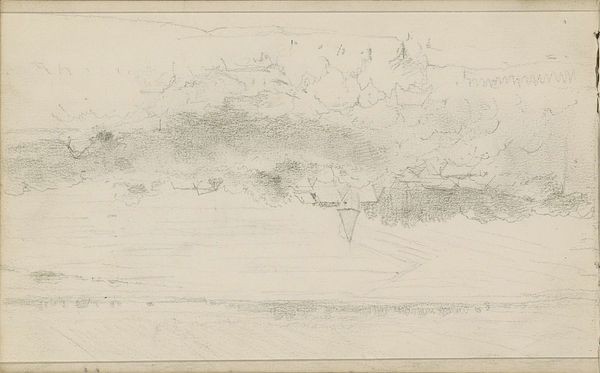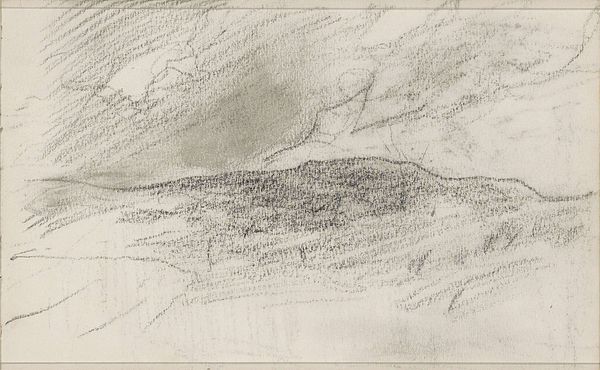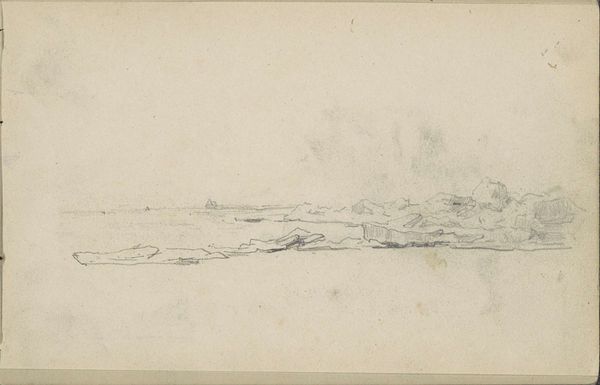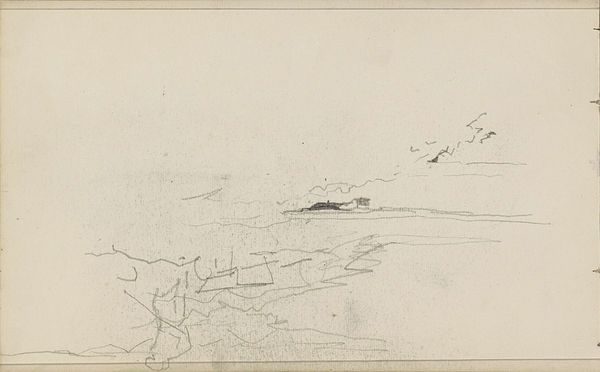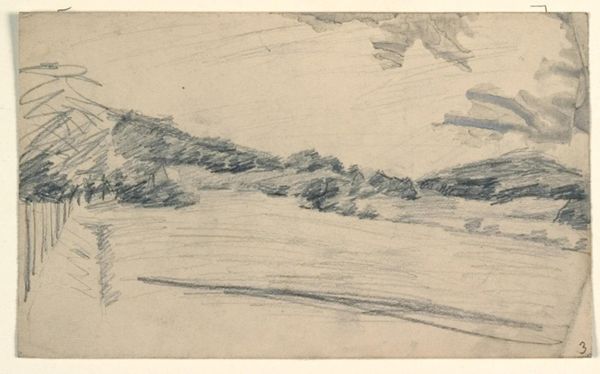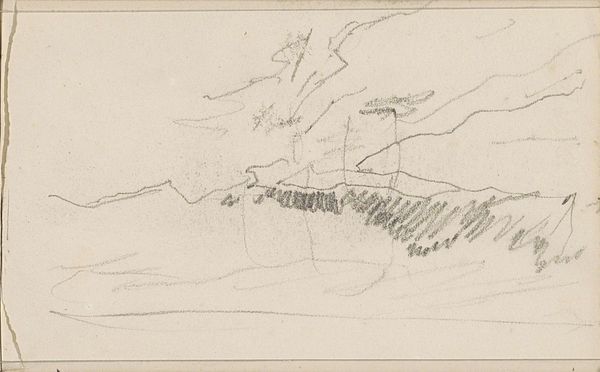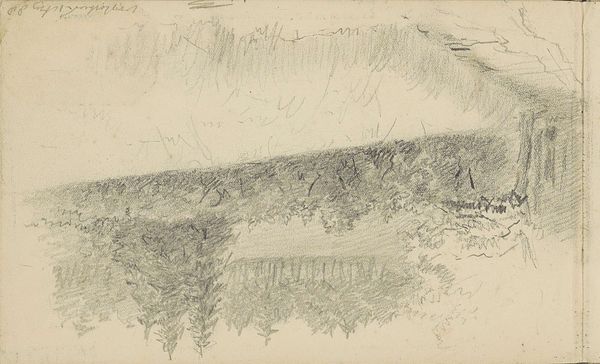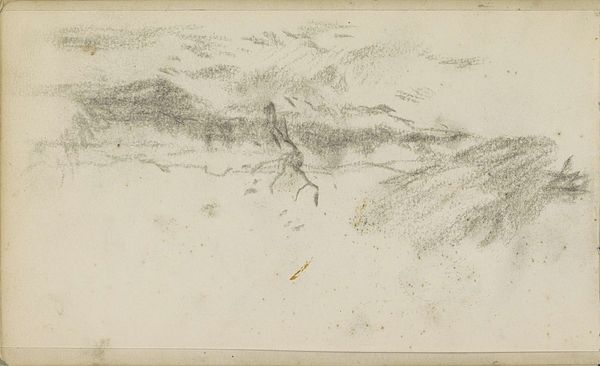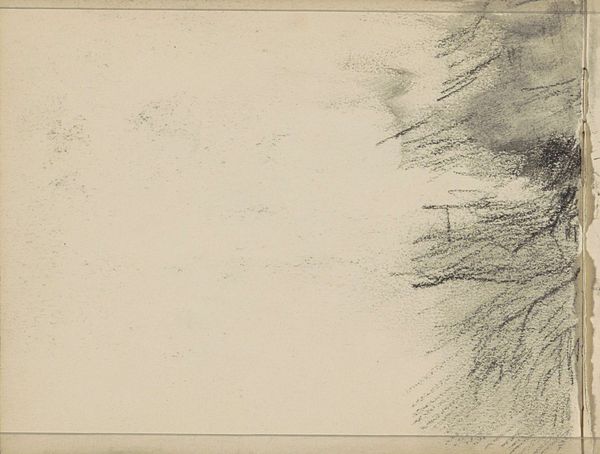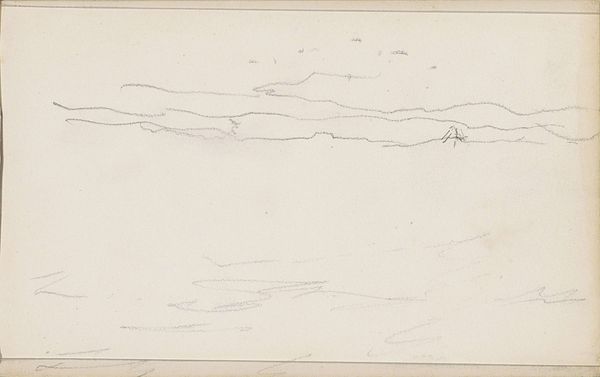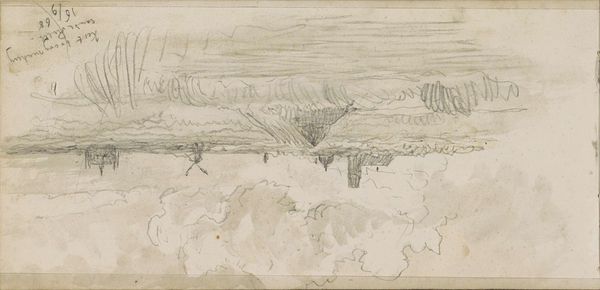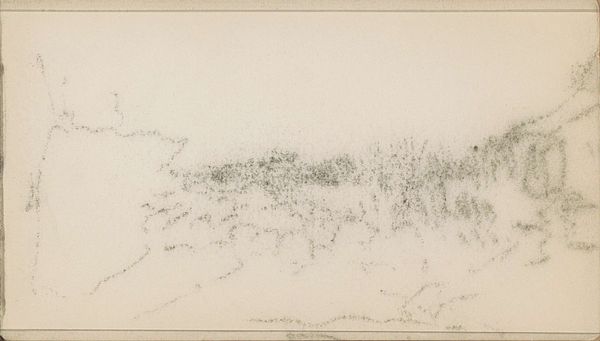
Copyright: Rijks Museum: Open Domain
Curator: This pencil drawing, “Landschap met figuren en een boerderij bij Groesbeek,” by Anna Catharina Maria van Eeghen, likely created sometime between 1901 and 1908, offers a glimpse into the Dutch countryside. What strikes you first about it? Editor: The immediacy. You feel like she captured a fleeting moment. The light pencil work suggests transience. It makes me consider the ready availability and relative ease with which sketches like this are produced. Curator: I agree about the transience! There’s something very delicate about the scene; like a whisper of a memory. I'm drawn to how the lines capture both the vastness of the landscape and the intimate details of the farm. The figures seem almost incidental. Editor: Yes, the figures are subservient to the land, aren’t they? What is most remarkable to me is how utilitarian objects become points of focus. Fences, roofs. Humble building materials lifted out of pure function and into art. How readily and with how little pretension did van Eeghen assemble the material world for display here? Curator: Precisely! It feels incredibly personal, less about grand statements and more about finding beauty in the everyday. She’s immortalizing this small patch of the earth. There is real tenderness in the treatment of the land and humble structures. Perhaps it's where she found solace or inspiration, a place to observe. Editor: It makes you consider how often women were limited to that very sort of observation, hemmed into those domestic spaces, forced to consider small details writ large when denied broader canvases. This little corner became an entire universe. But this pencil drawing prompts deeper questioning, pushing the boundary between documentation and expression, especially by examining what and who could wield those very instruments. Curator: Absolutely, this act of recording can itself be a rebellious act—giving permanence and therefore, importance, to what society often deems trivial. There's a gentle resistance, isn't there? To the fast pace of change, the noise of the world... She seems to say, "Look closely. There is beauty here, worth preserving.” Editor: Yes, look closely not just at what is depicted but how those humble pencils might also serve as powerful tools in the service of cultural expression and self-assertion, changing one little impressionable world at a time.
Comments
No comments
Be the first to comment and join the conversation on the ultimate creative platform.
